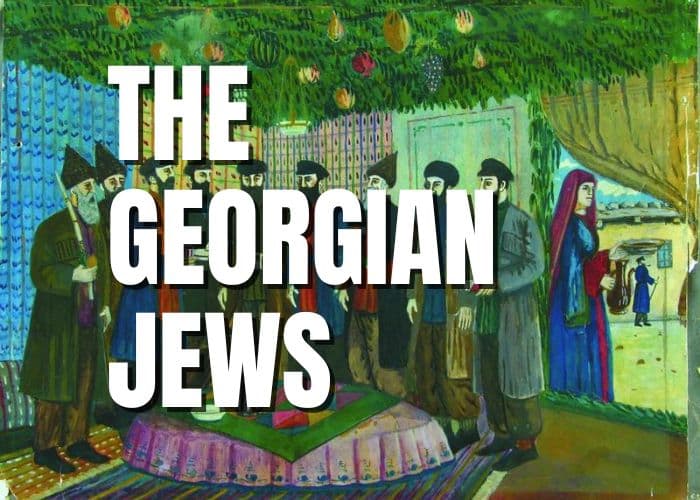Georgian Jews: A Rich History, Vibrant Culture, and Resilient Community
Georgian Jews are a unique and vibrant community that has thrived for over 2,600 years in the Caucasus region of Eurasia. Their rich history, culture, and contributions have left an indelible mark on Georgian society and the Jewish world at large.
- History
The history of Georgian Jews dates back to the Babylonian exile in the 6th century BCE, when Jews were forcibly removed from Judea and brought to Babylon (present-day Iraq). After the Babylonian Empire fell to the Persians, many Jews were allowed to return to their homeland, while others migrated to other parts of the Persian Empire, including the Caucasus region.
Georgian Jews have lived in Georgia since the 4th century CE, and their presence has been documented in historical records and writings. Over the centuries, they have faced periods of persecution and discrimination, but they have also enjoyed periods of prosperity and cultural flourishing.
During the Soviet era, Georgian Jews faced various forms of oppression and discrimination, including the closure of synagogues and schools, and restrictions on their ability to practice their religion and culture. However, many Georgian Jews also achieved success in fields such as science, literature, and music.
Today, there are approximately 3,000 to 4,000 Jews living in Georgia, with the majority residing in the capital city of Tbilisi. Despite their small numbers, Georgian Jews continue to maintain their unique cultural identity and traditions.
- Communities Today
The Georgian Jewish community is small but tight-knit, with strong family and community ties. The community is centered around the Great Synagogue in Tbilisi, which serves as a focal point for religious and communal events.
There are also smaller Jewish communities in other parts of Georgia, including the towns of Akhaltsikhe, Oni, and Kutaisi. These communities are supported by local Jewish organizations and receive assistance from Jewish aid groups from around the world.
- Culture
Georgian Jews have a rich and diverse culture that reflects their long history and unique traditions. One of the most distinctive aspects of their culture is their music, which blends Jewish, Georgian, and Middle Eastern influences.
The traditional music of Georgian Jews includes songs and dances for weddings, holidays, and other special occasions. The music is often accompanied by traditional instruments such as the panduri (a three-stringed lute) and the doli (a drum).
Georgian Jewish cuisine is also an important part of their cultural heritage. It includes dishes such as khachapuri (cheese-filled bread), pkhali (vegetable and walnut salad), and chikhirtma (chicken soup with lemon and egg).
- Religious Liturgy
The religious liturgy of Georgian Jews is a unique blend of Sephardic and Ashkenazi traditions, with influences from local Georgian customs. The main prayer book used by Georgian Jews is the Siddur, which contains prayers for daily, Shabbat, and holiday services.
The Georgian Jewish liturgy includes distinctive melodies and chants that reflect their cultural heritage. It also includes unique customs, such as reciting the prayer for rain during the summer months, when Georgia experiences droughts.
- Notable People and Accomplishments
Georgian Jews have made significant contributions to Georgian society and the Jewish world at large. Some notable figures include:
- Ilia Zdanevich: A Georgian-born artist, writer, and designer who was a leading figure in the Russian avant-garde movement.
- Nino Haratischwili: A Georgian-German writer and playwright.
The Georgian Jewish community has produced many notable figures who have made significant contributions to various fields, both within Georgia and beyond.
One such figure is David Baazov, a businessman and philanthropist who was born in Tbilisi. He is best known as the founder of Amaya Inc., a gaming and online gambling company that is now known as The Stars Group. Baazov is also a major philanthropist, and has donated millions of dollars to various causes in Georgia, including education, healthcare, and social welfare.
Another prominent Georgian Jewish figure is Zviad Gamsakhurdia, who was the first President of Georgia following its independence from the Soviet Union. Gamsakhurdia was a writer and intellectual who played a key role in the Georgian independence movement, and his presidency was marked by political and economic turmoil.
In the field of music, the Georgian Jewish community has produced several notable artists, including the singer and songwriter Ester Abreu, who is known for her unique blend of traditional Georgian and Jewish music. Abreu has released several albums and has performed extensively in Georgia, Israel, and other countries.
Other notable Georgian Jews include the journalist and activist Tamara Chergoleishvili, the writer and filmmaker Nana Janelidze, and the musician and composer Ariel Zilber.
Despite the challenges faced by the Georgian Jewish community over the centuries, they have managed to preserve their unique culture and traditions. From their distinctive cuisine to their traditional music and dance, the Georgian Jewish community has much to offer the world, and their contributions to Georgian society and beyond are a testament to their resilience and strength.








Ohr HaChaim Yomi – Emor